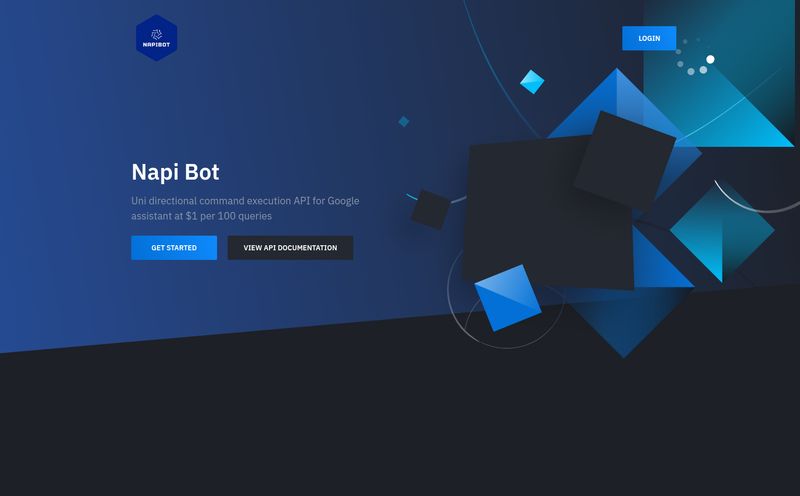The world of content has turned into a wild, wild west ever since the big AI language models galloped into town. As an SEO who’s been in the trenches for years, I've seen it all. The good, the bad, and the robotically-written ugly. We're all caught in this weird cat-and-mouse game, trying to figure out what's human, what's AI, and what's some strange hybrid of the two.
It’s a headache. You hire a writer, you get a piece back, and you have that nagging feeling... did a person actually write this? Or did they just plug a prompt into ChatGPT and call it a day? Authenticity is everything for building trust with an audience and, let's face it, keeping Google happy. So, we turn to AI detectors. And man, are there a lot of them. Most, in my experience, are about as reliable as a weather forecast in London.
But every now and then, a tool comes along that makes you sit up and pay attention. Recently for me, that tool has been Detecting-AI. It's been making some noise, so I decided to kick the tires and see if it could handle the bumpy roads of modern content creation.
So, What is Detecting-AI, Really?
At its core, Detecting-AI is exactly what it says on the tin: an AI detection tool. You give it a piece of text, and it tells you how likely it is that the text was generated by an AI. It claims to work across the major models we all know and... tolerate. We're talking ChatGPT (all versions), Gemini, Claude, and others. The big headline they splash on their site is a 98% accuracy rate. That’s a bold claim. A very bold claim in an industry where 70% accuracy can feel like a win.
The idea is simple: help writers, students, educators, and business owners maintain content integrity. It’s designed to be that first line of defense against the bot-pocalypse.

Visit Detecting-AI
My First Impressions of the User Experience
The first thing that I genuinely appreciated was the 'no sign-up' instant detection. Hallelujah. I am so tired of having to give up my email and my firstborn's naming rights just to check a 300-word paragraph. With Detecting-AI, you can land on their homepage, paste your text right into the box, and get a result. Simple. Clean. Fast.
The user interface itself is refreshingly minimalist. There are no confusing charts or pointless animations. It's a tool, not a video game. But the feature that really stood out to me was the AI Detection Highlighting. It doesn’t just give you a vague percentage score. No, it highlights the specific sentences and phrases that are setting off its alarms. This is incredibly useful. It turns an accusation into a conversation, allowing you to see why something feels robotic and fix it.
For anyone managing freelance writers, this feature alone is worth its weight in gold. Instead of just saying "this feels like AI," you can point to specific sections and provide actionable feedback.
Beyond Just Detection: The Full Toolkit
Okay, so it's a decent AI detector. But in 2024, that’s not always enough. Detecting-AI seems to get this, because they've bundled in a few other tools that turn it from a simple utility into more of a content suite.
The Built-in Plagiarism Checker
This is a no-brainer. AI models are trained on, well, the entire internet. The risk of them spitting out something that’s a little too close to existing content is real. Having a plagiarism checker in the same dashboard saves a ton of time. You can check for AI and for old-school copy-pasting in one fell swoop. The paid plans come with credits for this, which seems fair enough.
The AI Humanizer: A Double-Edged Sword?
Now this is where things get interesting. Detecting-AI includes an "AI Humanizer." The promise is that it can take AI-sounding text and rewrite it to sound more natural. I have... complicated feelings about these tools. On one hand, they can be useful for smoothing out a clunky, AI-generated sentence. We've all seen them. Sentences that are grammatically perfect but have all the soul of a toaster.
On the other hand, it feels a bit like fighting fire with fire. Are you really making the content more authentic, or just teaching one robot how to sound like another? My take: use it sparingly. It’s a helpful editor for awkward phrasing, but it shouldn't be a crutch to pass off 100% AI work as human. Think of it as a polisher, not a creator.
Fact Checker and API Access
They also mention a Fact Checker and API access. The Fact Checker is a nice touch, especially since AI's are notorious for what experts politely call "hallucinations" and what I call "making stuff up." The API is for the big players—businesses and developers who want to integrate this detection capability into their own workflows. It shows the platform has ambitions beyond just us humble bloggers.
Let's Talk Accuracy: Can You Trust the 98%?
Alright, the moment of truth. Does it actually work? I threw everything I had at it. Some of my own, 100% human-written articles. A few paragraphs straight from ChatGPT-4. And, for the real test, a piece of AI content that I had heavily edited myself—the kind of hybrid content that is becoming more and more common.
The results? Pretty impressive, I have to admit. It correctly identified my writing as human. It immediately flagged teh pure ChatGPT output as 100% AI. The hybrid piece was the most interesting; it flagged it as “likely contains AI,” highlighting the exact sentences that I had left in from the original AI draft. That’s nuanced. That’s useful.
Is it a perfect 98% all the time? Probably not. No detector is infallible. False positives can happen, and as AI models get smarter, this arms race will continue. But as of right now, Detecting-AI is one of the most reliable signals I’ve come across. I wouldn't use its verdict as irrefutable proof to fire a writer, but I would absolutely use it to start a conversation about their process.
The All-Important Question: How Much Does It Cost?
You can have the best tool in the world, but if it costs a fortune, it's useless to most of us. Detecting-AI has a pretty straightforward pricing structure that seems to cater to different types of users. Here’s how I see it breaking down.
| Plan | Price | Best For | Key Features & Limits |
|---|---|---|---|
| Free | $0 / month | Students, bloggers, or anyone needing a quick, one-off check. | 5,000 character limit per scan, up to 100 detections per day. No fancy features. |
| Monthly | $14 / month | Freelancers and small businesses who need regular, flexible access. | 160,000 character limit, unlimited detections, 1,000 plagiarism credits/month, AI Humanizer. |
| Yearly | $7 / month (billed as $84 annually) | Agencies, content teams, and power users looking for the best value. | Same as Monthly but with a whopping 12,000 plagiarism credits for the year. |
The Free plan is great for what it is—a test drive. But that 5,000-character limit (about 800-1000 words) means you can't check a full blog post. The real value is in the paid plans. The Yearly option is clearly the best deal if you know you’ll be using it consistently. You save 50% and get way more plagiarism credits. A smart move on their part.
Who Should Use Detecting-AI?
So, who is this for? In my opinion, it's a solid investment for a few key groups:
- Content Managers & SEO Agencies: If you're managing multiple writers, this is a must-have for quality control and upholding your standards.
- Educators & Academic Institutions: A clear use case for checking student submissions for AI usage and ensuring academic integrity.
- Serious Bloggers: If you accept guest posts or hire writers, you need a way to verify the originality of the work you're publishing.
- Businesses: Anyone publishing content under their brand name needs to be sure it's authentic and trustworthy.
Who might not need it? If you're a solo writer producing all your own content from scratch, you can probably skip it. But even then, it can be a useful final check to ensure your writing doesn't accidentally sound too generic or robotic.
Frequently Asked Questions
1. How accurate is Detecting-AI really?
They claim a 98% accuracy rate. In my tests, it was very reliable, especially at distinguishing between fully human, fully AI, and hybrid content. While no AI detector is 100% perfect, this one is definitely at the top end of the market.
2. Will my content be flagged as plagiarized?
Detecting-AI offers two separate functions. The AI detector checks for patterns associated with AI writing. The Plagiarism Checker, which is a separate tool on the platform, checks for copied content from other online sources. Your text won't be flagged for plagiarism unless it's actually copied from somewhere else.
3. Is there a free trial?
Yes, the Free plan functions as an ongoing free trial. It gives you limited access (5,000 characters per scan) to the core AI detector so you can see how it works before committing to a paid plan.
4. Can I get a discount for being a student or educator?
The website doesn't explicitly advertise a standard discount, but it's always worth reaching out to their support team. Many SaaS companies offer educational discounts if you ask.
5. What’s the difference between the AI Detector and the AI Humanizer?
The Detector identifies content that was likely written by an AI. The Humanizer is a rewriting tool that attempts to take AI-generated text and modify it to sound more human and bypass detection.
My Final Verdict on Detecting-AI
So, is Detecting-AI the magic bullet that solves all our AI content problems? No, of course not. Such a thing doesn't exist. But it's a damn good tool. It's a reliable, well-designed, and thoughtfully-packaged platform that does what it promises with a high degree of accuracy.
In the current content climate, having a trustworthy AI detector isn't just a luxury, it's a necessity. It’s like having a good security camera; you hope you never need it, but you're glad it's there. For its blend of accuracy, user-friendliness, and helpful extra features, Detecting-AI has earned a permanent spot in my digital toolbox. It's not invincible armor in the content arms race, but it's a pretty solid shield.
Reference and Sources
- Detecting-AI Official Website
- Detecting-AI Pricing Information
- Google Search's guidance on AI-generated content (Google Search Central)



